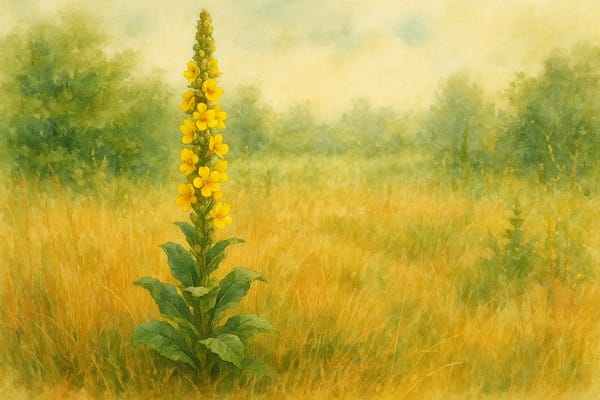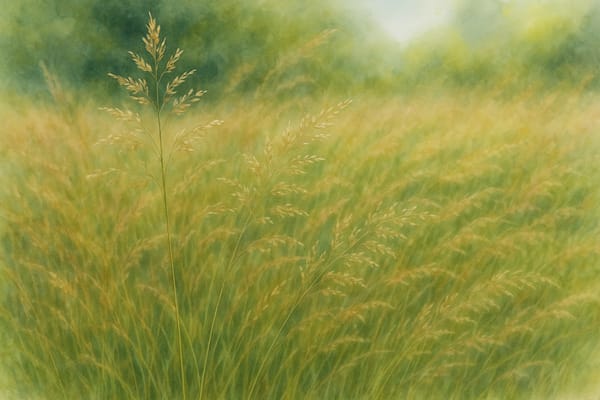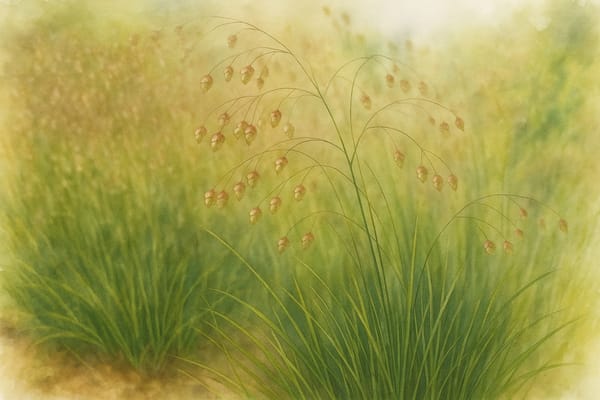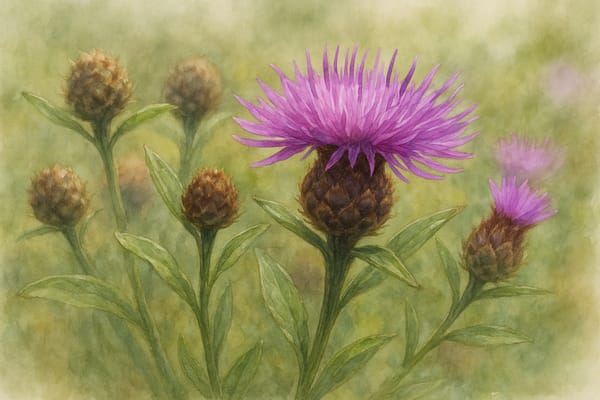The Torchbearer of Folklore and Healing
Historical and Cultural Significance
Great mullein has long been woven into British and Cornish folklore, cherished for its healing powers, protective magic, and practical uses.
Medicinal Heritage
Used for centuries to treat coughs, lung ailments, and wounds, mullein was a staple of both folk and monastic medicine. Herbalists like Dioscorides and Culpeper praised its soothing, expectorant qualities.
Folklore and Magical Uses
In legend, mullein protected Ulysses from enchantment—a symbol of resilience and warding off evil. It featured in British folklore as a charm against witches, demons, and ill fortune.
Practical and Symbolic Roles
Nicknamed "Hedge Taper" and "Candlewick Plant," its tall stalks were used for torches and wicks, symbolizing light, guidance, and protection. Its soft leaves served as insoles, bandages, and linings.
Cornish Context
Though not unique to Cornish folklore, mullein’s presence on cliffs, verges, and in cottage gardens aligns with Cornwall’s traditions of self-sufficiency and herbal knowledge. It remains a powerful emblem of endurance in wild landscapes.
Growing Great Mullein in Coastal Gardens
| Requirement | Details |
|---|
| Light | Full sun |
| Soil | Well-drained, poor, sandy or gravelly soils |
| Water | Drought-tolerant; water young plants until established |
| pH | Neutral to slightly alkaline |
| Salt Tolerance | High; excellent for exposed coastal sites |
| Hardiness | Hardy in the UK |
Care and Cultivation Tips
- Site Selection:
Plant in open, sunny spots with poor, well-drained soil—perfect for wildflower borders or gravel gardens. - Sowing:
Sow directly in autumn or early spring. As a biennial, it forms a rosette first year, flowering the next. - Watering:
Water until established. Mature plants thrive in dry conditions. - Feeding:
No feeding required—too much nutrition reduces flowering. - Maintenance:
Deadhead to control self-seeding if desired. Cut back old stems after flowering. - Pests/Diseases:
Generally pest-free. Watch for spider mites in hot, dry spells.
Coastal Garden Notes
Great mullein thrives in saline, windy environments, making it ideal for coastal gardens. It supports bees, butterflies, and moths, while its tall flower spikes add drama and structure to wild spaces.
Summary
A plant of healing, light, and protection, Great mullein bridges folklore, tradition, and nature. In coastal gardens, it flourishes with minimal care in poor, sunny soils—offering both pollinator value and a living link to the enduring tales and herbal wisdom of Cornwall and the UK.











